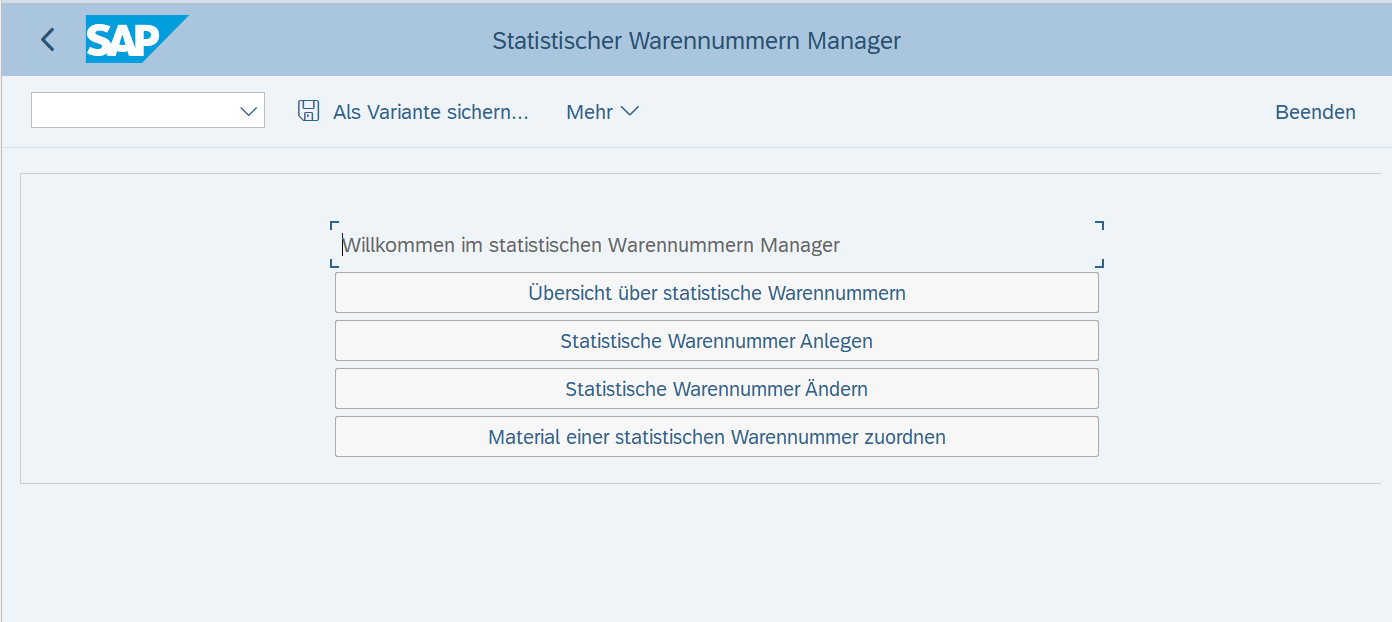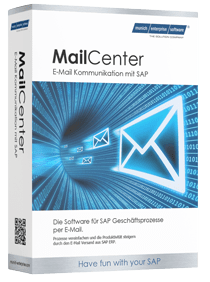The challenge of Intrastat in S/4HANA
Are you faced with the problem that you have to submit an Intrastat declaration , but can no longer manage the necessary statistical commodity number in the SAP GUI as usual? You are not alone! Many companies that have been efficiently handling their processes in the SAP GUI for years find that certain functionalities are no longer available as usual in the standard scope of SAP. Instead of working in the familiar SAP GUI as usual, companies are increasingly faced with the task of familiarizing themselves with new, Fiori-based applications. But what alternatives are there to continue existing processes efficiently?
Table of Contents
- The challenge of Intrastat in S/4HANA
- Changes in SAP S/4HANA: Limitations of the SAP GUI for the Statistical Commodity Number
- Management of statistical commodity codes prior to SAP S/4HANA 1610
- Changes with SAP S/4HANA 1610
- Our solution: A standalone SAP GUI program for managing the statistical commodity code
- Result

The Intrastat declaration is a mandatory declaration for companies within the European Union that documents the cross-border movement of goods between member states. This declaration is used to collect statistical data on intra-Community trade and requires the correct classification of goods on the basis of the statistical commodity code.
The statistical commodity code is therefore an essential part of the Intrastat declaration. Until SAP S/4HANA 1610 , it was possible to maintain these numbers directly via the classic SAP GUI. However, newer versions of SAP S/4HANA have replaced this functionality. Instead, SAP is now relying on Fiori apps, especially the F2516 app, which can be found under the SAP_SLL_BC_CLS_CMMDTYCODE catalog.
This change poses challenges for companies, especially if they have previously handled their processes via the familiar SAP GUI. An alternative is the Global Trade System (GTS), which, however, is very extensive and cost-intensive as a stand-alone system. For companies that only want to maintain the statistical commodity number, this is a very comprehensive solution compared to our approach and may be oversized for this use case.
In this blog article, we explain the changes in SAP S/4HANA related to the statistical commodity number, the challenge of the new solution, and how our alternative provides a simple, efficient way for SAP GUI users.
Changes in SAP S/4HANA: Limitations of the SAP GUI for the Statistical Commodity Number
Overview SAP GUI vs. Fiori for Intrastat
The change from the classic SAP GUI to the Fiori app F2516 brings significant changes. While the SAP GUI offers a stable and proven interface, SAP relies on a modern, web-based user interface with Fiori. This has both advantages and disadvantages:
| Criterion | SAP GUI | SAP Fiori (F2516) |
|---|---|---|
| Usability | Familiar interface, fast operation | Requires training, new UI structure |
| Accessibility | Desktop application, stable and mature | Web-based application, thus more flexible and cross-device, but browser-dependent |
| Performance | Very fast, resource-saving | May be slower depending on your browser and network |
Many companies continue to prefer the SAP GUI because it allows for more direct management of statistical commodity codes. The Fiori app F2516 can be a hurdle for users who are not familiar with the new interface.
Management of statistical commodity codes prior to SAP S/4HANA 1610
Prior to the introduction of SAP S/4HANA 1610, companies could create, change, and manage statistical commodity codes directly from the SAP GUI. This option was beneficial for many companies because the SAP GUI provides a familiar interface and no additional training was required for employees.
Companies were able to efficiently maintain their commodity codes and ensure that all the necessary information for Intrastat reporting was correctly stored in SAP S/4HANA.
Changes with SAP S/4HANA 1610
Since SAP S/4HANA 1610, the maintenance of the statistical commodity code has been moved to the Fiori environment. Companies now have to switch to SAP Fiori apps such as F2516.
Challenge:
This can mean an increased training effort. Employees who have worked with the SAP GUI for years now have to switch to the new Fiori interface. This can cause additional training costs and training periods.
Alternative:
Another option is SAP GTS. The Global Trade System (GTS) offers extensive functions for international trade, but is very complex and costly for companies that only want to maintain the statistical commodity number.
Our solution: A standalone SAP GUI program for managing the statistical commodity code
In order to offer companies an efficient alternative , we have developed a standalone SAP GUI-based program that complements the previous functionality. Our program covers three main areas:
Creating and Changing the Statistical Commodity Code
This part of the program allows users to create new statistical commodity codes or change existing numbers. We rely on the SAP function /SAPSLL/API_COMCO_MD_DISTR, which enables direct interaction with the relevant databases. This ensures that all changes are correctly applied and stored in the appropriate tables.
Assignment of materials to a statistical commodity code
Another central component of our program is the linking of materials with a statistical commodity number. For this purpose, we use the method lo_product_api->create_classification( … ), which enables efficient integration of the classification data. This allows materials to be assigned to the correct statistical commodity codes quickly and reliably.
Overview of existing statistical commodity codes
Our program also offers a clear display of all statistical commodity codes available in the system. This data is extracted from the /SAPSLL/CLSNR table and combined with the descriptions of the /SAPSLL/CLSNRT table. For visualization, we use a SALV table, which provides a user-friendly way to search and analyze the existing data.
Advantages of our solution
Our solution complements the SAP standard with practical functions and offers companies a number of advantages over alternative approaches such as SAP Fiori Apps or SAP GTS:
Familiar environment
The SAP GUI will be retained. Companies can continue to map their established processes in the familiar user interface.
Minimal training effort
Employees continue to work with the familiar interface without having to learn new applications.
Direct data maintenance
The management of the statistical commodity codes is quick and uncomplicated directly in the SAP GUI.
Cost effectiveness
For companies that do not require the full functionality of SAP GTS, our solution is an economically attractive alternative.
Fast implementation
Thanks to the use of existing SAP standard mechanisms, our solution can be implemented quickly – without any far-reaching system interventions.
Result
The changes in the SAP standard in connection with the maintenance of statistical commodity codes pose new challenges for many companies – especially with regard to the correct and timely preparation of the Intrastat declaration. Seamless maintenance of this data is essential to ensure error-free reporting and avoid compliance risks.
The alternatives provided for in the SAP standard, for example via Fiori apps such as F2516, do not offer the desired convenience or the necessary integration into existing workflows in every application. Our solution supports companies in continuing to use their familiar processes in the SAP GUI efficiently.
Thanks to seamless integration into existing SAP systems, our extension enables rapid implementation without far-reaching changes – with minimal training effort.
This makes the management of statistical commodity codes easier, safer and more economical – in the spirit of compliant and efficient Intrastat preparation.
If you would like to learn more about our solution or request a demo, please feel free to contact us!







